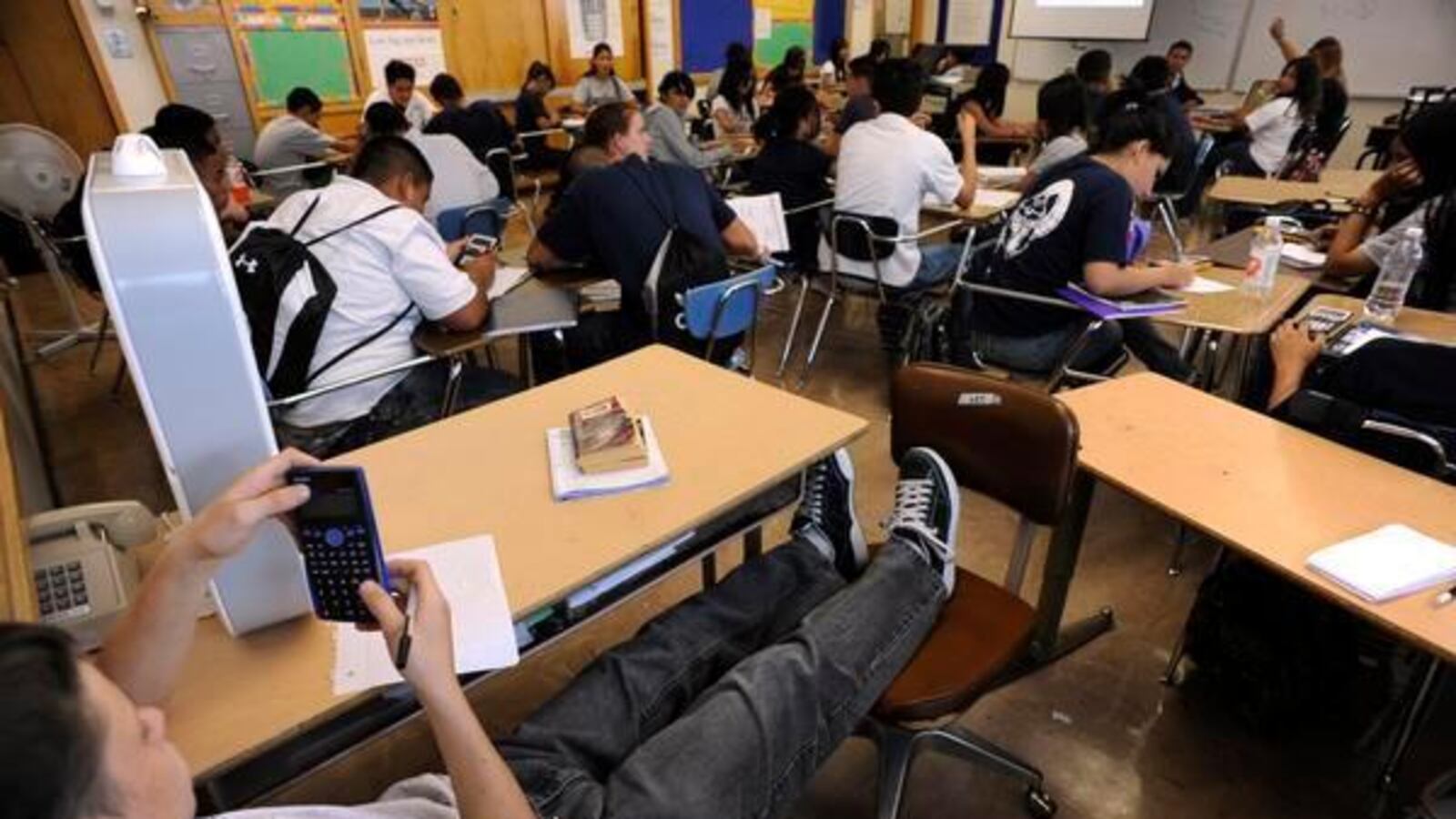What do Colorado teachers want? Smaller class sizes!
When do they want it? As soon as possible, given fiscal and labor market constraints.
When the Colorado Education Association, the state’s largest teachers union, surveyed its members earlier this year about what their schools most need, a whopping 74 percent said they need smaller class sizes and another 63 percent said they need more time to work with colleagues.
The poll was part of a broader effort, known as the My School My Voice survey, by the National Education Association to highlight teachers’ opinions. Teachers were asked to choose from a list of various areas for improvement, from healthy meals to more welcoming front office staff to more art and music instruction. The categories included community, healthy students in modern schools, well-rounded curriculum, school climate, and quality educators.
More than 700 Colorado teachers responded.The survey doesn’t represent a random sample. Nonetheless, respondents represented more than 80 of Colorado’s 178 districts and more than 400 schools.
Other top responses included more active involvement from the broader community, relevant and timely professional development, a community free from bullying and harassment, early detection tools to keep students on track, and more support professionals to help students and teachers.
Union representatives pointed to research and anecdotes that support smaller class sizes as a way to improve student performance.
“The bigger my class sizes, the harder it is to provide individual attention, and the harder it is to have time to grade their written work,” said Cathy Keller, a Cherry Creek teacher who has had as many as 36 students in her world history class. “[Decreasing class size] is, in my opinion, the single most important thing we could address to improve educational outcomes, and it’s the thing constantly ignored.”
Colorado voters on Tuesday will decide on a statewide tax increase for schools, and many districts also have local tax increases on the ballot. Many school boards have promised to put some of the money from successful tax measures into lowering class sizes.
Some studies have found a strong relationship between smaller class sizes and better student performance, but those improvements can be canceled out by poorly performing new teachers.
A recent study out of New York City looked at classes in hundreds of schools over a five-year period that were just above or below a 32-student cap. Researchers found that reducing class size by an average of four students produced gains in reading and math scores equivalent to roughly 2½ months of extra learning. However, when smaller classes were achieved by bringing on a new teacher, students of that new teacher posted no gains.
A Brookings Institute survey of existing research found that class size matters, but it’s also an expensive way to improve student achievement. It recommended focusing efforts to reduce class size on the youngest students and those from disadvantaged backgrounds, who have the most to gain from individual attention.
Another research survey by the National Education Policy Center at the University of Colorado echoed the concern about cost but argued that lower class size may be more cost effective than other approaches — and took issue with research that downplays the effect of class size.
Like many states, Colorado struggles with a shortage of teachers in certain areas, and the number of students entering traditional educator prep programs has declined significantly. Colorado has one of the highest rates of new teachers in the United States — and among the least competitive teacher salaries.

